The construction of the body of most hanfu tops and robes is what usually decides what ’type’ of hanfu it is. We’ll go over a few common types of hanfu and what features they have. There are, however, a few rules that pretty much all hanfu tends to follow:
- First, there’s always a seam down the middle of the back, meaning that the piece of clothing is made up of one piece of fabric on the left and one on the right, stitched together in the center.
- There’s also never a seam at the shoulder like we have in modern clothing—instead of the front and back being two different pieces of fabric, the front and back are made up of the same piece, just folded over the shoulder.
Another thing to note is that while we often refer to tops and robes in hanfu as the two main categories, that isn’t how hanfu is really categorized, just a way for us to talk about the shape of things in English. Instead, we have the 長/长/chang2/long versions and 短/短/duan3/short versions of clothing, which can be applied to most categories of clothing that we separate by construction—the only difference is length. Short versions usually fall around mid-thigh in length, while long versions can go down to the knees.
襦/襦/ru2/Ru
The ru is a kind of top that’s often confused with the shan (more on that later). Over time, the word ru has become kind of a catchphrase for ‘top’ in hanfu, especially because ru doesn’t really come in long versions. In reality, a top only really counts as a ru if it has something called a 腰襴/腰襕/yao1 lan2/waist piece, which is a separate rectangular piece of fabric stitched to the bottom of the ru to extend its length, a design especially prominent in the northwest regions of the Han to Jin dynasties. Ru most often come in crossed collars with straight or vast sleeves, and very rarely come in any other combination. Again, just look for the yao lan—if it’s there, you can probably call it a ru. Keep in mind though that since most people haven’t quite done as much research, a lot of merchants and other newbies may refer to all tops as ru.
衫/衫/shan1/Shan
The shan is probably the simplest type of top you can find—think of it as a ru without a yao lan, with no connecting piece making up the waist of the piece. Instead it’s made of the same piece of fabric top to bottom. While in modern times the character 衫 is often used to mean shirt or blouse, for hanfu, something can be a shan no matter if it’s short or long: a shan that we would usually refer to as a top would be a 短衫/短衫/duan3 shan1/short shan, while something we would refer to as a dress or a robe that covers the entire body or most of the body would be a 長衫/长衫/chang2 shan1/long shan. Shan can come in all kinds of combinations of collars and sleeves, the defining characteristic of these is that they’re made of a single layer of fabric. Otherwise, all kinds of tops and robes from the Tang dynasty forward can be counted as shan.
襖/袄/ao3/Ao
Think of an ao as a shan but double-layered, made up of an inner layer that’s usually smoother against the skin and an outer layer sewn together. Each layer is sewn individually then stitched together afterwards. You’ll most often see the ao in Ming dynasty clothing for a few reasons: one, the Ming dynasty was, in general, colder because of the Little Ice Age, which caused their clothing to be a lot warmer and hence allow merchants today to sell a lot of Ming dynasty winterwear. Two, there were some types of fabric popular in the Ming dynasty that were woven with gold and silver thread to create a textured surface with different colors, but the back of these fabrics can be rough against the skin, and so an inner lining is needed. Although you’ll see the ao almost exclusively in Ming dynasty 襖裙/袄裙/ao3 qun2/Aoqun sets, technically any double-layered top without a ru can be referred to as an ao.
袍/袍/pao2/Pao
The pao is what we’d usually call a robe, always long and covering the full body. Earlier on the pao was used as an inner layer, but it pretty quickly evolved into outerwear—most of the pao that you’ll see being sold or made today is going to be outerwear. Unlike changshan and changao, the pao usually goes past the knees and down to the ankles, and there’s also usually no connecting piece between the top and bottom part at the waist, though these are often cinched at the waist with a belt or other waist accessory. A few of the most popular pao include the 圓領袍/圆领袍/yuan2 ling3 pao2/round-collar robe, the 道袍/道袍/dao4 pao2/Tao robe, as well as the 直裾/直裾/zhi2 ju1/straight-hem robe, and 曲裾/曲裾/qu1 ju1/curved-hem robe (裾/裾/ju1 being another word for robes in the earlier dynasties pre-Tang).
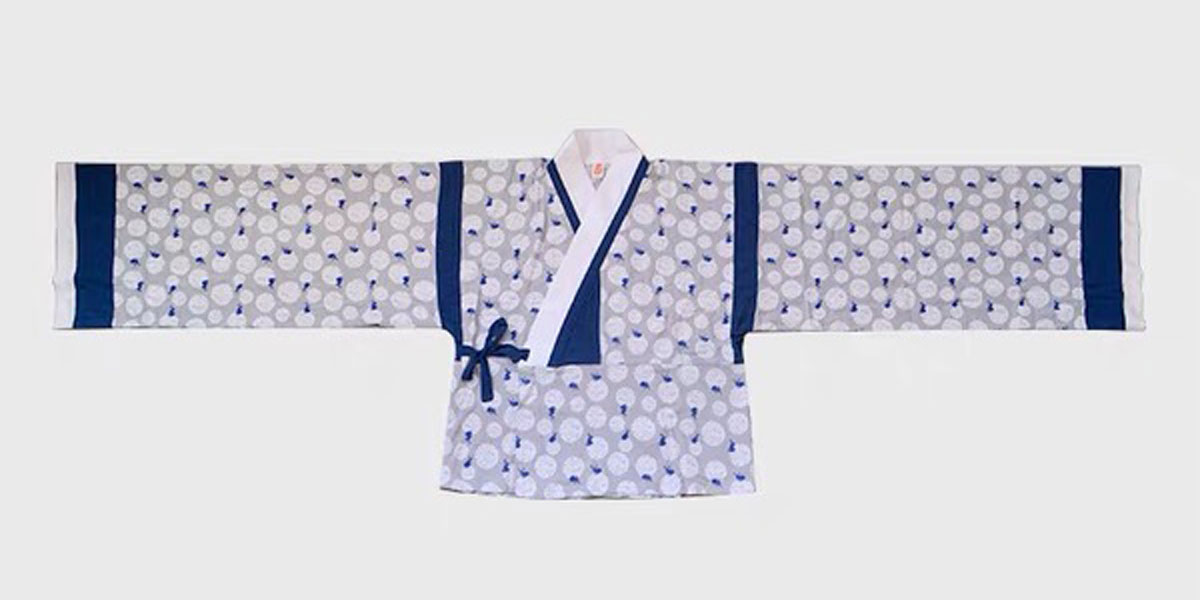
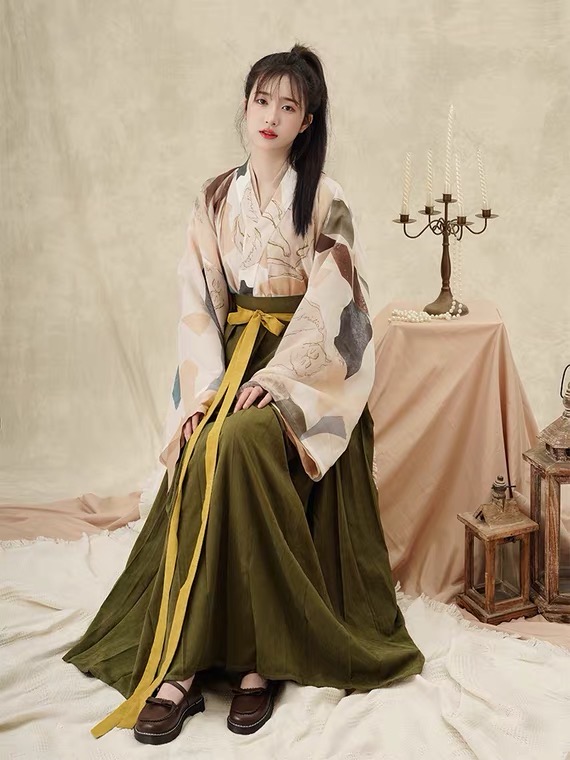
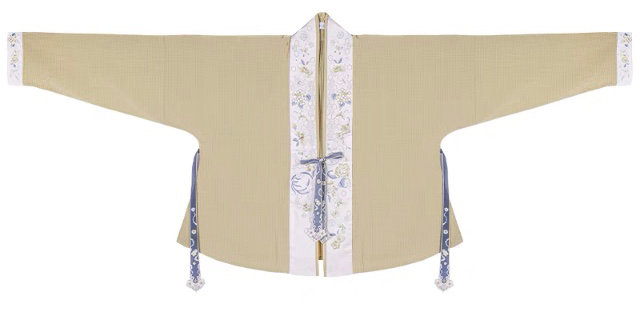
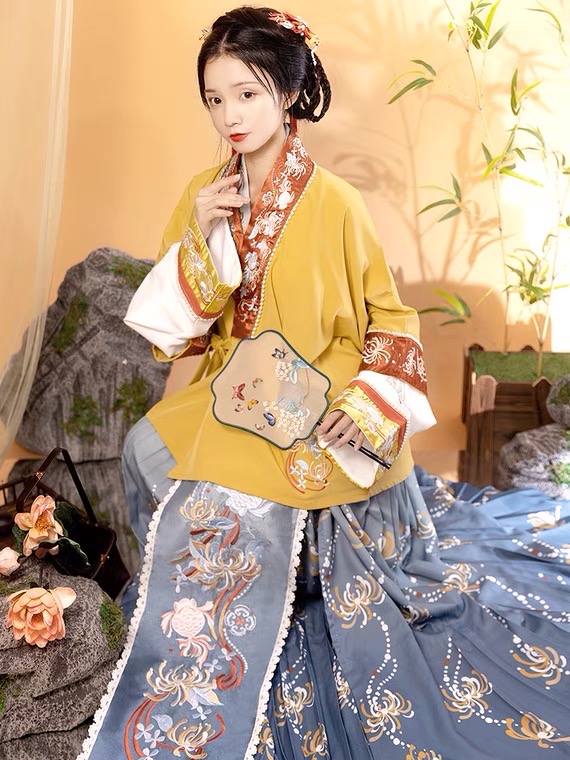
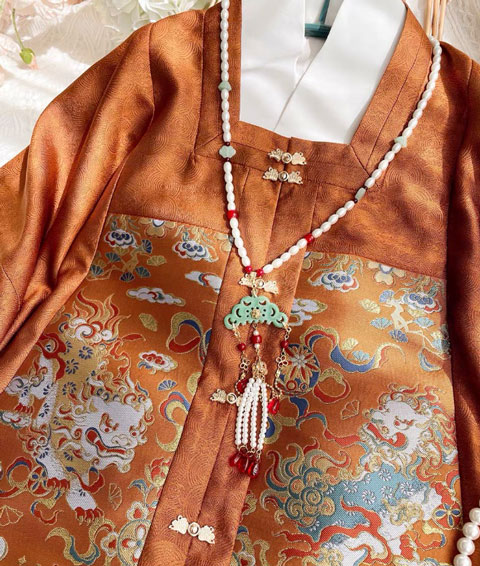
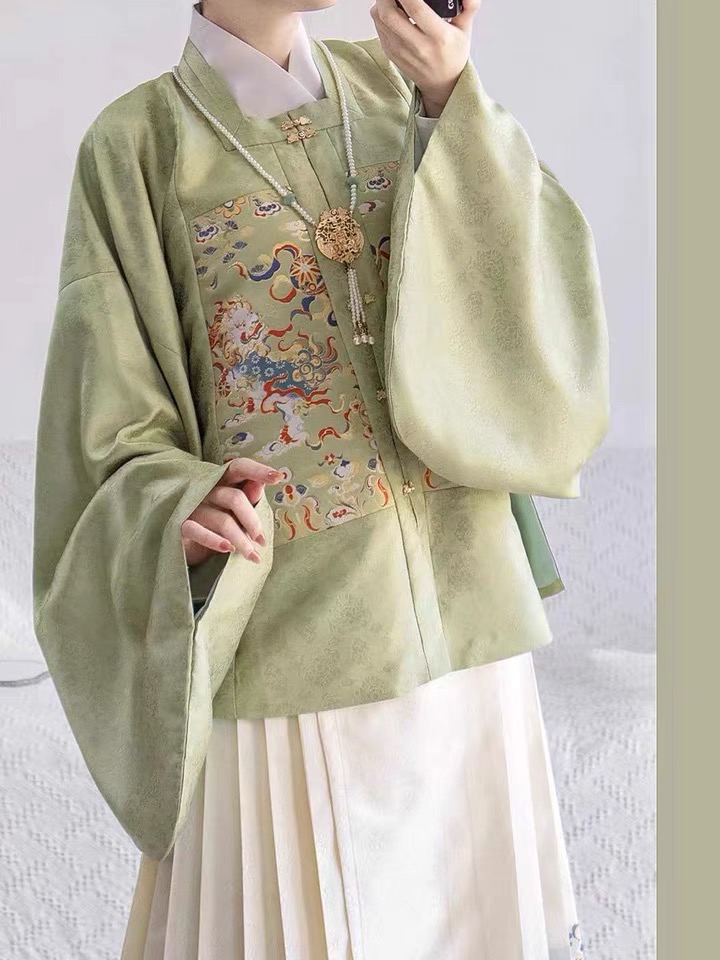
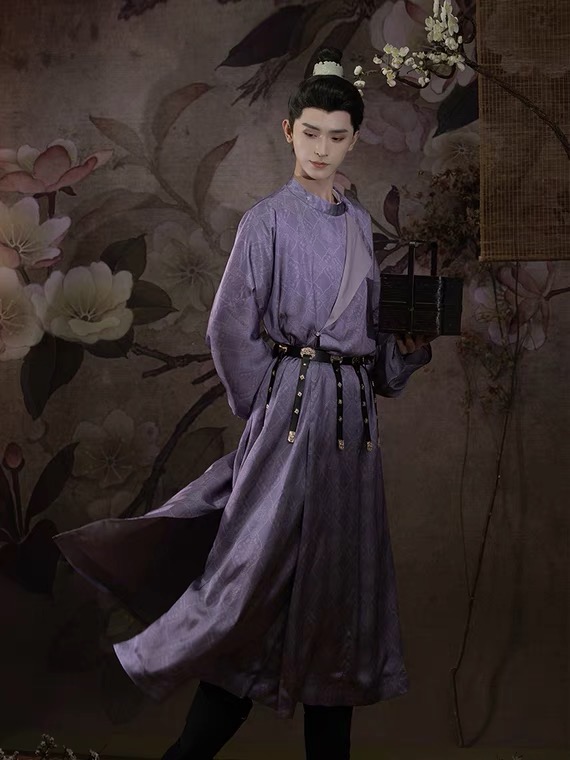
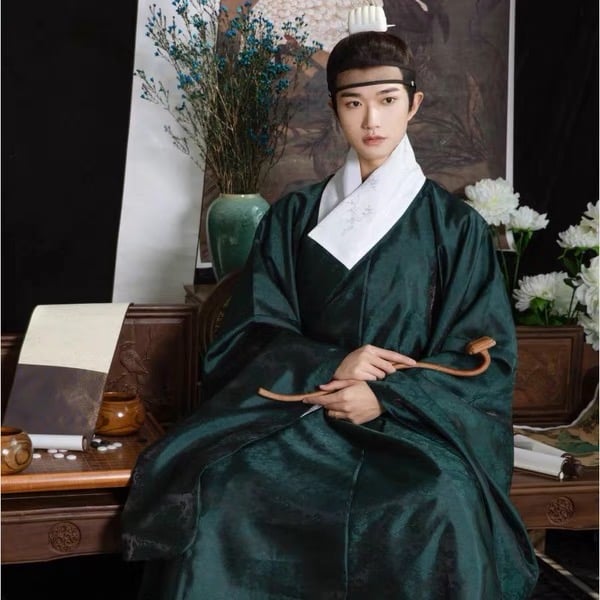

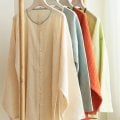
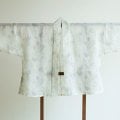
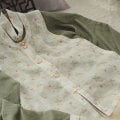
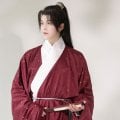

Does a yaolan of a ru ever show on the finished look? Is it considered inappropriate?
Yes! Ru can be worn tucked in or not, it's absolutely acceptable for the ru to be on the outside.
I see, thank you!
Nice! I love how you explain the occurrence of ao in Ming dynasty because of the colder climate.
Haha I'm glad! The Ming Dynasty had a lower average temperature, although you can also see the Little Ice Age's effect on Qing Dynasty clothing, since they actually took the brunt of it. I'm not that familiar with the Qing Dynasty, though.
Artikel nya menambah wawasan
Terimakasih
I really like the way the spesific vocabularies are written here. Very informative for me who's self-learning Chinese 😆
Haha same for me!!
What and what for are the side ties on the 衫/shān image?
Those are just decorations! Not side ties, just little ribbons that look pretty!
Actually on second thought they might be for 對穿交/dui4 chuan1 jiao1/cross worn collar, I have an article with collar styles coming out soon~